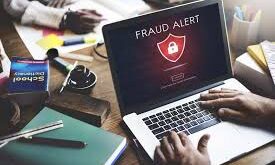Credit Bureau Resolution Process: Fix Credit Report Issues. Your credit report plays a crucial role in determining your financial health, influencing everything from loan approvals to interest rates. However, errors and discrepancies can occur, leading to potential financial setbacks. Understanding the credit bureau resolution process is essential for fixing inaccuracies and protecting your credit score. This guide will take you through the entire process, from identifying issues to disputing them effectively.
Step-by-Step Credit Bureau Resolution Process
1. Obtain Your Credit Report
Before resolving credit report issues, you need to get copies of your credit report from major credit bureaus such as Experian, Equifax, and TransUnion. You are entitled to one free credit report per year from each bureau via AnnualCreditReport.com.
2. Review Your Report for Errors
Carefully examine your credit report for any discrepancies, such as:
- Incorrect personal details (name, address, or Social Security number)
- Unauthorized accounts or transactions
- Inaccurate account balances or payment histories
- Duplicate accounts
- Fraudulent activities
3. Gather Supporting Evidence
If you find errors, gather supporting documents to validate your dispute. This may include:
- Bank statements
- Payment receipts
- Identity verification documents
- Correspondence with lenders
4. File a Dispute with the Credit Bureau
Each credit bureau allows you to file a dispute online, by mail, or via phone. Here’s how:
- Experian: Submit disputes through their online portal or mail a dispute letter.
- Equifax: Use their online dispute center or mail a formal complaint.
- TransUnion: File online, call their customer service, or send a dispute letter.
5. Contact the Creditor (Furnisher)
In addition to notifying the credit bureau, you should also contact the creditor or lender that reported the incorrect information. Provide supporting documents and request a correction.
6. Wait for Investigation
Credit bureaus typically have 30-45 days to investigate and respond to disputes. During this time, they contact the creditor to verify the disputed information.
7. Review the Bureau’s Response
Once the investigation is complete, the bureau will provide a written response. Possible outcomes include:
- Correction: The error is removed or updated.
- No Change: The information is deemed accurate.
- Further Investigation Needed: More evidence is required.
8. Follow Up If Necessary
If the dispute is not resolved in your favor, you can:
- Re-file the dispute with additional evidence.
- Request a statement of dispute to be included in your credit report.
- File a complaint with the Consumer Financial Protection Bureau (CFPB).
9. Monitor Your Credit Report Regularly
Even after resolving an issue, monitor your credit report frequently to ensure no further errors appear. Consider using credit monitoring services for real-time alerts.
10. Seek Legal Assistance (If Required)
If you experience prolonged disputes or identity theft issues, consulting a credit repair attorney can be beneficial.
10 Expert Tips for Resolving Credit Bureau Issues
- Check your credit report at least once a year to catch errors early.
- Dispute errors with all three credit bureaus if the mistake appears on multiple reports.
- Keep copies of all dispute documents for reference and future use.
- Use certified mail with a return receipt when mailing disputes to track correspondence.
- Follow up within 30 days if you don’t receive a response from the bureau.
- Request written confirmation when an error is corrected.
- Be persistent but patient—some disputes take longer to resolve.
- Freeze your credit if you suspect fraud to prevent further damage.
- Report identity theft immediately to prevent fraudulent accounts.
- Consider professional credit repair services if you face complex issues.
10 Frequently Asked Questions (FAQs)
1. How long does it take to resolve a credit dispute?
The credit bureau typically has 30-45 days to investigate and respond.
2. Can disputing errors lower my credit score?
No, filing a dispute does not affect your credit score.
3. What if my dispute is denied?
If your dispute is denied, you can re-file with additional evidence or escalate the matter.
4. Do credit bureaus remove all negative marks?
Only incorrect information is removed. Legitimate negative items remain on your report for 7-10 years.
5. How do I dispute a fraudulent account?
Immediately file a fraud alert with the bureaus and report the issue to the FTC (Federal Trade Commission).
6. Can I dispute multiple errors at once?
Yes, you can list multiple errors in a single dispute request.
7. Is hiring a credit repair company necessary?
Not always. You can dispute errors yourself for free, but complex cases may require expert help.
8. Will settling a debt improve my credit score?
It depends. A settled account is better than an unpaid one but may still impact your credit.
9. Can an old debt be re-added after removal?
Only if the creditor provides new verified evidence.
10. Should I monitor my credit after resolving a dispute?
Absolutely. Regular monitoring helps prevent future errors and fraud.
Conclusion
The credit bureau resolution process is vital for ensuring an accurate credit report and maintaining financial stability. By following a systematic approach—reviewing reports, disputing inaccuracies, and monitoring your credit—you can protect your credit score effectively. If errors persist, consider seeking legal or professional credit repair assistance. Staying proactive in managing your credit report will help you secure better financial opportunities in the future.
 credit.suarajatim.com
credit.suarajatim.com
